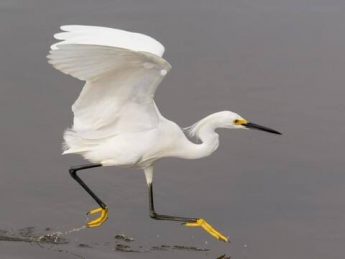Introduction
Quick Navigation
One of the important things many Southwest Florida visitors may observe is the number of massive, pale, two-legged animals. No, not their fellow visitors. We’re discussing the area’s feathered fauna, the various varieties of white birds that similarly call the region home.
Just so you know, Egrets and ibis, herons and pelicans all appear in white combinations, and that can be mystify, particularly since some of them seem very identical at first glimpse.
Egrets are truly just a category of heron, while cranes belong to a different denomination of birds.
See also for more
Understanding the location of a wildlife sighting is crucial in comprehending what species you’ve discovered.
Secondly, solely to the Great Blue Heron in size, the Great Egret (Casmerodius albus), sometimes named the Great White Egret, is one of the biggest wading birds that dwell in the Everglades. Standing over 4 feet in height with a wingspan of longer than 50 inches, it is identical in look to the Snowy Egret but can be differentiated by its tall black legs, black feet, stout yellow bill, and great size. The Snowy Egret is slighter than the Great Egret and possesses a black bill and yellow feet. Check also for reference
The Great Egret furthermore, is constantly wrongly specified as the Great White Heron, which is the white form of the Great Blue Heron. The huger bill and dim legs of the Great White Heron are helpful discerning factors. Like further herons, the Great Egret flies gradually and with its neck reduced, which is an understandable way to differentiate it in flight from storks, cranes, ibises, and spoonbills, which broaden their necks in flight.
The fishing procedures of Great Egrets are among the most productive of all birds. Great Egrets tail their prey by gradually strolling or standing motionless in the shoals and forage with their webbed feet, digging and surveying the bottom, and snapping up fish in a course of milliseconds with their sharp bill reflex. In accumulation to fish, their diet comprises invertebrates, amphibians, reptiles, other birds, and little mammals. They feast in a variation of wetlands, incorporating marshes, swamps, streams, rivers, ponds, lakes, tide flats, canals, and engulfed fields. Check also here
Reproduction
These birds’ nest in trees, besides water and pile in groups named colonies, which may comprise another heron or egret variety. They are monogamous, and both parents generate their three to four eggs. Inexperienced egrets are hostile towards one another in the nest, and bigger siblings usually kill their vulnerable relative so that not all survive to fledge in two to three weeks.
Conservation Success
The great egret is the emblem of the National Audubon Society and depicts a conservation achievement story. The snowy white bird’s gorgeous plumage gave rise to it far too famous in 19th-century North America. Great egrets were demolished by plume hunters who provided purveyors of the newest ladies’ fashions. Their populations have fallen over by some 95 per cent. Presently, the opinion is vastly brighter. The birds have admired valid safety over the last century, and their numbers have improved abundantly.
Nesting
Probably major breeds at age of 2-3 years. Occasionally nests in unusual pairs, often in colonies, constantly mixed with other wading birds, cormorants, Anhinga. In diverse colonies, Great Egrets tend to nest elevated. Male assigns nest area and exhibits there, at first steering off all other birds, later wooing females. Courtship shows comprise calling, circular show flight, spreading neck up with bill focused skyward. Nest site is in tree or shrub, often 10-40’ above floor or water, periodically very low in forest or swamp, sometimes up to 90’ high in tall cypress. Nest is usually produced by both sexes an outlet of wands, occasionally significant. Check

